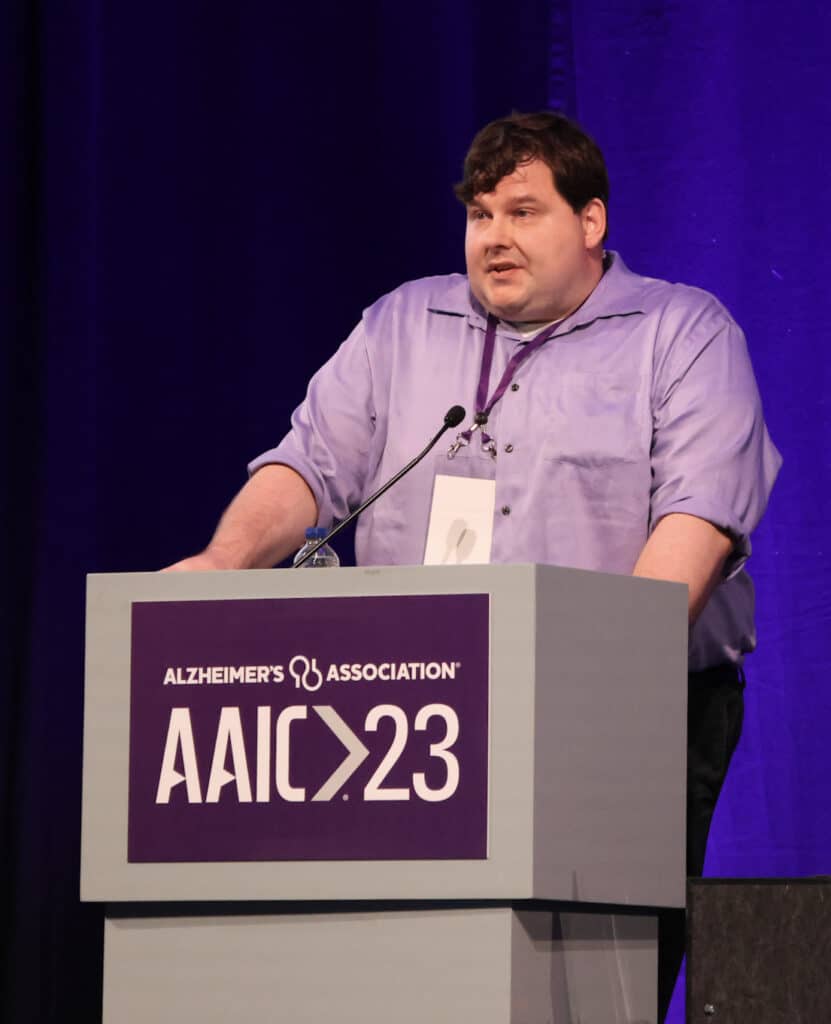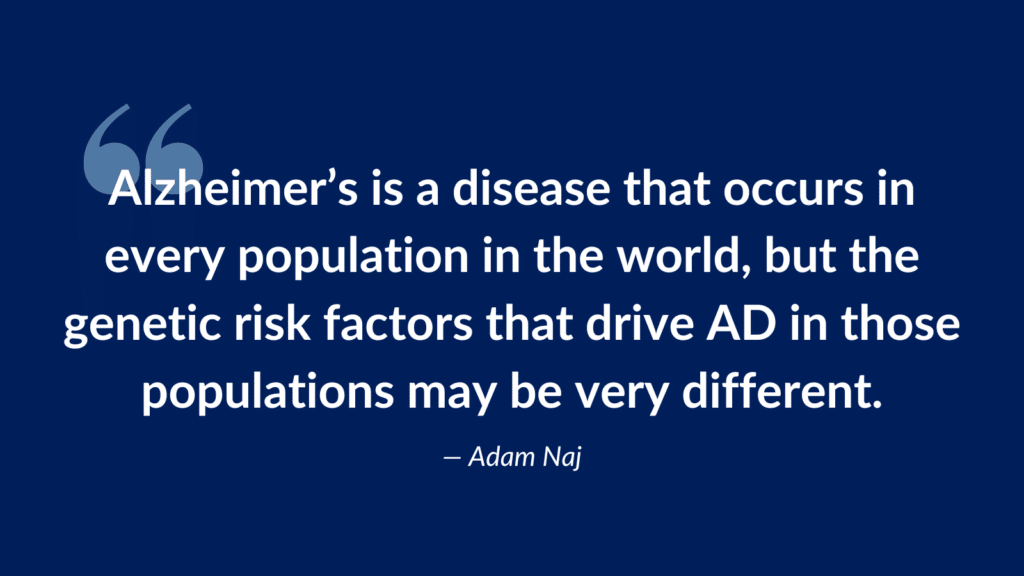
By Meg McCarthy
You run several manufacturing plants for an automaker when you start getting reports of unexpected breakdowns in your new production model. You painstakingly investigate the cause of the breakdown on a part-by-part basis at one of your factories and find the problem part. You look at cars from your other factories experiencing the breakdowns but find the same part working well in those cars. What do you do?
This captures the challenge faced by the investigators of the Alzheimer’s Disease Genetics Consortium (ADGC), whose work to identify genetic risk factors for Alzheimer’s disease (AD) is complicated by the fact that the genetic variants causing disease in persons of one ancestral background may be very different from those driving disease on other background.
In research co-led by Adam Naj, PhD, a genetic epidemiologist and assistant professor of epidemiology at the University of Pennsylvania’s Perelman School of Medicine, including subjects with diverse ancestries was essential to detecting signals that would otherwise go unseen.

Dr. Naj speaking at AAIC 2023
In his group’s most recent study featured at this year’s Alzheimer’s Association International Conference (AAIC) in Amsterdam, Netherlands, Dr. Naj and colleagues performed a genome-wide association study (GWAS) on over 56,000 genomes captured through high-density genotyping, which allowed his group to look at over 290 million variants across 22 chromosomes. By comparing differences in the frequencies of certain variants between people who have AD and similarly aged people who don’t have the disease, they are able to find genetic variants connected with disease, much like finding the part of the car causing a breakdown.
A key focus was including participants of diverse ancestral backgrounds.
Specifically, his group in the ADGC combined data from more than 60 studies including individuals with non-Hispanic white (NHW), African American, Hispanic, and East Asian ancestry.
“Alzheimer’s is a disease that occurs in every population in the world,” said Dr. Naj. “But the genetic risk factors that drive AD in those populations may be very different.”
This means that certain disease mechanisms may be more prominent in driving AD in one ancestry compared to those disease mechanisms that drive AD in another ancestry, even though the same underlying mechanisms are present in all people with AD.
Including patients of diverse ancestries allows genetic epidemiologists like Dr. Naj to identify mutations that otherwise may not be seen in one ancestry.
Key to the study were statistical analyses looking at differences in variant frequencies between those with and without AD, which allowed them to identify ‘loci’, or specific areas located in or near genes that are associated with Alzheimer’s disease (AD). Where this study differed from most previous studies was the comparisons of association patterns between different ancestry groups.
The team identified five novel loci (including two with effects across ancestry groups and three unique to individual ancestry groups) as well as 13 previously known loci.
These results demonstrate the power of having diverse ancestry in GWAS.
While some variations have high-impact, visible signals in GWAS, others of subtler impact usually need a much larger sample size to be seen.
“Certain variants can double or triple a patient’s risk, like the APOE locus,” said Dr. Naj. “But others only increase risk from 5 to 25%, and these require bigger sample sets to be observable. Diversity in the data allows us to work around that limitation,” said Dr. Naj.

With their collection of diverse datasets, the team was also able to detect signals found in only large-scale GWAS in the past.
For example, in 2022, a new locus near the gene SHARPIN was discovered in a study including almost 800,000 samples. With only 56,000 participants, Dr. Naj’s team was able to detect the SHARPIN signal.
“We saw it in a much smaller data set, which is a big accomplishment,” said Dr. Naj. “It demonstrates with diversity and differences in the frequency of variants between populations, you can see signals you wouldn’t be able to see with just individuals of European ancestry.”
Ultimately, using GWAS Dr. Naj and his team aim to find “druggable targets,” or sections of the genome whose functional effects in the development of disease could be interfered with by targeted drugs or classes of drugs.
In the long run, knowing these targets may help us greatly with identifying drugs and therapeutic treatments that can slow or stop disease progression or even reverse it.
“What if we could stop AD before it begins?” said Dr. Naj.
To read more about Dr. Naj’s work, please click here.